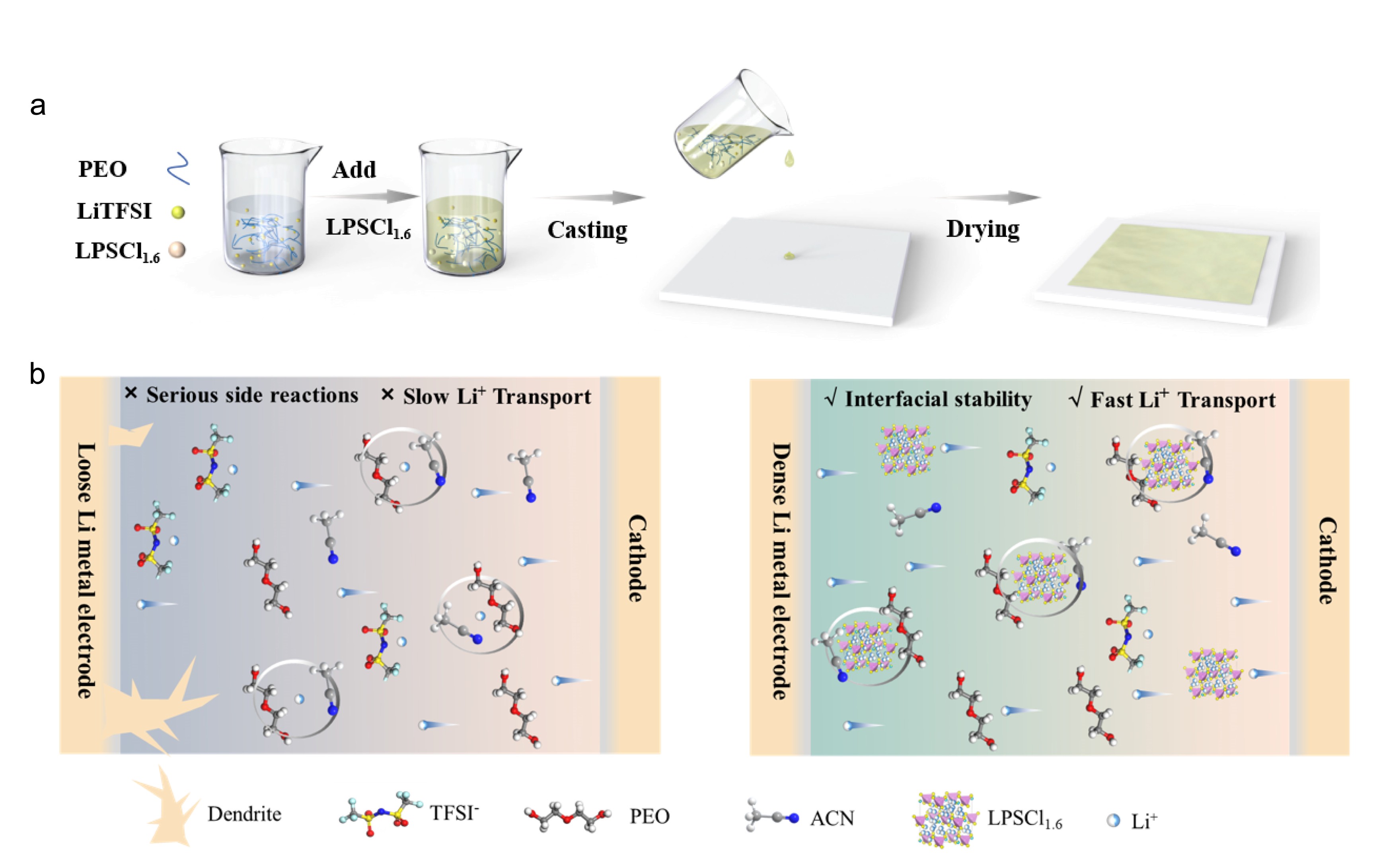T. Mu #, R. Yang #, H.D. Shi *, Y.X. Ma, H. Zhang * and Z.-S. Wu *
Nano Energy, 2025, accepted.

The development of poly(ethylene oxide) (PEO)-based solid-state lithium metal batteries (SSLMBs) is constrained by sluggish Li⁺ transport and unstable electrode/electrolyte interfaces. Herein, we designed a Li5.4PS4.4Cl1.6-incorporated composite solid-state electrolyte that concurrently achieve exceptional solvent stabilization, ion-conduction highways, and self-built interfacial stability toward high-performance SSLMBs. Li5.4PS4.4Cl1.6 exhibits strong chemical interactions with acetonitrile solvent through C≡N bond coordination, effectively suppressing parasitic decomposition and enhancing electrochemical stability. By preferentially coupling with Li+, Li5.4PS4.4Cl1.6 weakens PEO-Li+ interactions, creating continuous Li+ conduction highways that achieve an ultrahigh Li⁺ transference number of 0.61 and enhance ionic conductivity of 5.8 × 10-4 S cm-1. During cycling, the electrolyte spontaneously constructs a Li3PS4/Li2S/LiF/LiCl/Li2O-dominated interphase at lithium metal anode, which homogenizes lithium deposition and sustains stable cycling for over 800 h at 0.45 mA cm-2 with a high critical current density of 1.4 mA cm-2. By pairing with LiFePO4 cathode, the SSLMBs deliver 157 mAh g-1 at 1 C while retaining 89% capacity after 500 cycles. This work presents a unified solvent-ion-interface regulation strategy for advancing high-energy-density SSLMBs toward practical applications.